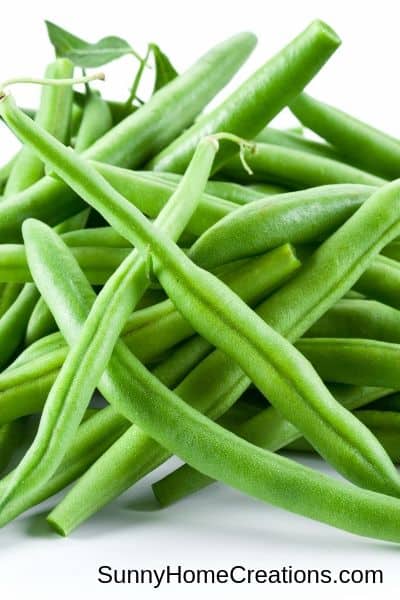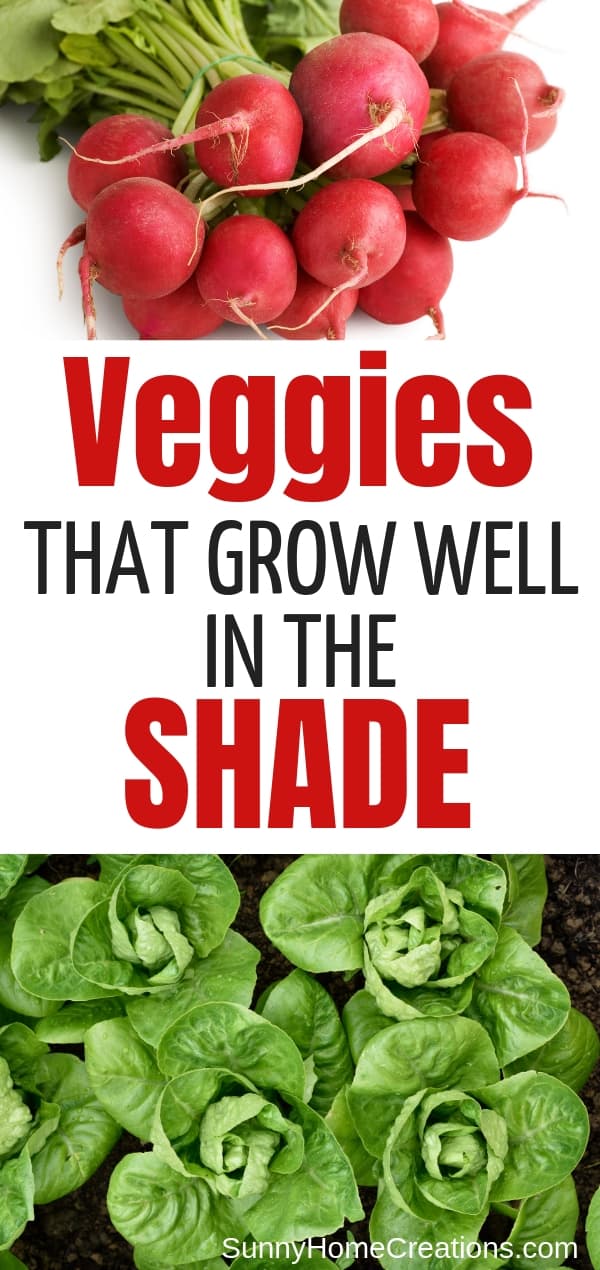This post may have affiliate links. If you click one of these links and make a purchase, we will be paid a commission at no additional cost to you.
Growing fruits and vegetables is so fulfilling. After you harvest your homegrown produce, you can tell that it tastes so much better than what you get at the grocery store.
By growing your own produce, you know exactly what goes on your table. Since you’re the one who waters, fertilizes, and takes care of the plants from the seeds to the full-grown plant, you know exactly what’s in them and how safe they are to eat.
The biggest question most people have is: Which vegetable should I start with?
Knowing what kind of vegetables to grow is as important as knowing where you will grow them. If you’re living in a place where there’s not enough sunlight, you might think that you have less options.
But that is not the case.
Even if you are not blessed with a sunny place, there are still a lot of vegetables you can grow. If you don’t have any idea which produce to start with, check out these seven shade loving vegetables.
Vegetables That Grow in Shade
Beans

Beans are ideal to grow even for beginners. They take very little effort to maintain.
There are many different types of beans you can start with. Pole beans and bush beans need very little space and can be grown in the shade.
You can grow beans such as Blue Lake Bush Beans if you want to stick with something familiar.
Tongue of Fire (bush bean) or Scarlet Runner (pole beans) are great beans to try if you want to try something a bit adventurous.
Lettuce

If you love salad or a BLT for lunch, you should try growing lettuce in your garden.
There’s another reason to plant lettuce: Lettuce dislikes direct sunlight.
People who have less space to plant in can benefit from planting lettuce. These vegetables can be planted in pots and containers and kept inside the house. Since they are a cool-season greens, they only need watering and fertilizing to grow. They have shallow roots so they can be planted in less soil, too.
Radish

Another root vegetable that can tolerate even the lowest shade is a radish. Not only can the radish itself be used for different dishes, but the plant also produces tasty greens for salads.
There are a lot of radish varieties. There are types that mature very fast and can be planted even during the fall and winter seasons.
Broccoli

Broccoli loves growing in cold weather. They don’t mind if the temperature drops and if they don’t have enough sun.
This vegetable can grow in well-drained soil. It only needs one to two hours of direct sunlight.
Broccoli is ideal for beginners who want to try their hands on companion planting. It can be planted next to onions and carrots.
Cauliflower

Pair your broccoli with cauliflower! Like broccoli, this vegetable prefers a cooler temperature and a shady location.
A cauliflower plant can yield large produce when exposed to sunlight for at least six hours a day but it can handle growing in shaded plots, too.
Once you see the cauliflower head growing, pull up the leaves to hide the heads. Fasten the leaves with a clothespin.
This will make the meaty part more tender. It also creates a whiter cauliflower as well. Using this trick can repel leaf bugs and mosquitoes from eating the plants.
Carrots

Another root vegetable that can handle partial shade is carrots.
When growing carrots, keep an eye on the ground. Once the carrot is exposed, apply mulch around them or cover them with soil to avoid the bitter taste.
Mixing some used coffee grounds into the soil can also aid in the growth of carrots.
Green Onion

Green onions grow fast. The green leaves taste great in salads, soups, and meat dishes.
They can grow even when not planted directly to the soil. The roots soaked in a container of water can sprout leaves and can be transplanted to soil with a partial shade source.
Things To Keep In Mind When Growing Vegetables In Shade
Choose vegetables that can adapt to shade. Avoid growing those that require full sun.
When growing vegetables in a partially shaded area, expect that the crops will mature slower.
Paint the fences and walls near the plants white. This will allow more light to bounce to the vegetables.
Use a good quality soil with plenty of fertilizer. Since the plants are growing in partial shade, you need to supply the plants with more nutrients.
Watch out for insects and pests. Cool and shady areas are attractive for snails and slugs. Scatter crushed eggshells around the plants to deter pests.
Even if you don’t have a well-lighted garden, you can still start your vegetable garden. Gather your seeds and tools and grow your own produce.

Other Posts You Might Enjoy:
Attract Song Birds to Your Garden with These Plants
Best Vegetables and Fruits for Beginner Gardeners
Tools Every Gardener Should Own





Diana says
I have a small garden but it does not receive enough sunlight. I actually wanted to start my own vegetable garden but I was not sure if it is possible. Your article gave me hope, I guess I will start with Green Onions.